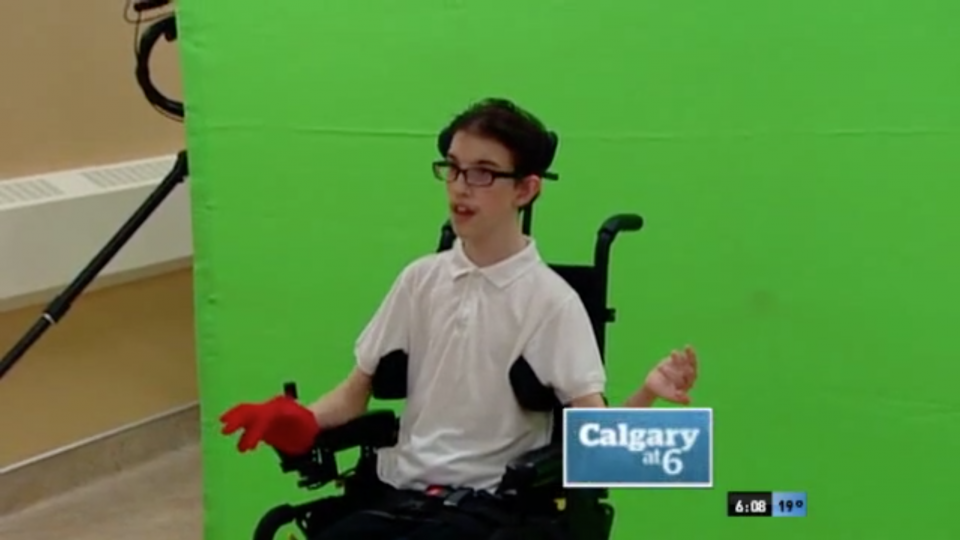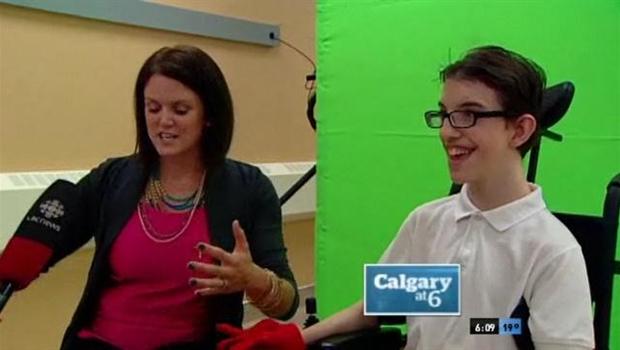Digital Tools Help Young Patients Recover in Calgary
Young patients at the Alberta Children’s Hospital now have a chance to go mountain climbing or snowboarding without leaving the hospital grounds - with the help of a virtual reality system designed to assist with rehabilitation and disease management.
IREX (Interactive Rehabilitation and Exercise System) uses green-screen technology (removed in the IREX 1.5) to immerse patients in a sporting or gaming environments. It’s more than just fun: these interactive exercise programs – prescribed by an Alberta Health Services (AHS) physical or occupational therapist – test for and build balance, mobility and endurance. Unlike traditional exercise programs, most young patients can’t get enough of IREX.
Zachary Klenner uses the IREX system. His curved spine, coupled with the effect of cerebral palsy on his arms, makes it difficult for the 16-year-old to bring his arms and hands together.

Zachary Klenner uses IREX to build up the strength in his arms. (Tara Weber/CBC)
Activity on the system can be tracked and monitored over the course of the patient’s therapy and treatment, allowing health professionals to see what improvements have been made.
“In their day-to-day lives, children are surrounded with computer technology, so it is often hard to get them motivated to do more traditional exercises,” says Dr. Barbara Ramage, Co-ordinator for the C.H. Riddell Family Movement Assessment Centre at the Alberta Children’s Hospital.
"This system is a fantastic way to encourage exercise for these children and lets them play in a very fun computer world that most of them are very comfortable with."
Dr. Barbara Ramage

Courtesy of Frenare Brazil

Zachary Klenner's occupational therapist, Lyndsey Bristow, discussing the IREX exercsises.
Klenner plays games for roughly one hour a week that help him move his arms — one where he catches falling coconuts in a barrel and another where he picks up boxes from one conveyor belt and places them on another.
"Those are my two favourite games because they help me stretch out my arms. I get a real good stretch," said Klenner. "Soon, I’ll be able to get my arms down and by my sides.

This is what Zachary Klenner sees as he works his muscles with the IREX system in the Alberta Children's Hospital. (Tara Weber/CBC)
Games can be customized for each patient. Some can be programmed to work only one part of the patient’s body, such as a thumb after tendon repositioning surgery, or programmed to work the patient’s entire body, which is often needed to rehab after a traumatic brain injury. The system has more than 20 virtual environments.
“Because the system is so easily customized to the specific abilities of the patient, it can be used for a wide range of patients,” says Dr. Ramage.
“It’s a great system for Zachary, and kids just like him, because it’s fun for them. The kids feel like they’re playing but they’re really working hard on their therapy and recovery.”
Sheri Coady
Zachary’s mother






